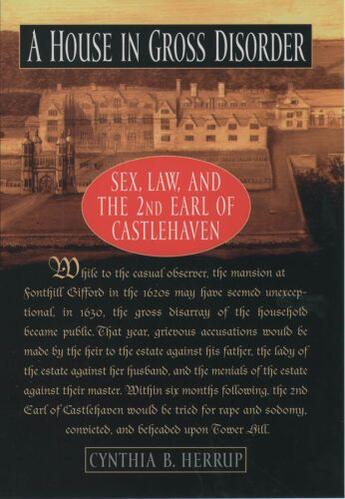-
Nombre de pages : (-)
-
Collection :
(-)
-
Genre :
(-)
-
Thème :
Non attribué
-
Prix littéraire(s) :
(-)
Résumé:
Sex, privilege, corruption, and revenge--these are elements that we expect to find splashed across today's tabloid headlines. But in 17th century England, a sex scandal in which the 2nd Earl of Castlehaven was executed for crimes so horrible that "a Christian man ought scarce to name them"... Voir plus
Sex, privilege, corruption, and revenge--these are elements that we expect to find splashed across today's tabloid headlines. But in 17th century England, a sex scandal in which the 2nd Earl of Castlehaven was executed for crimes so horrible that "a Christian man ought scarce to name them" threatened the very foundations of aristocratic hierarchy.
In A House in Gross Disorder, Cynthia Herrup presents a strikingly new interpretation both of the case itself and of the sexual and social anxieties it cast into such bold relief. Castlehaven was convicted of abetting the rape of his wife and of committing sodomy with his servants. More than that, he stood accused of inverting the natural order of his household by reveling in rather than restraining the intemperate passions of those he was expected to rule and protect. Herrup argues that because an orderly house was considered both an example and endorsement of aristocratic governance, the riotousness presided over by Castlehaven was the most damning evidence against him. Castlehaven himself argued that he was the victim of an impatient son, an unhappy wife, and courtiers greedy for his lands. Eschewing simple conclusions about guilt or innocence, Herrup focuses instead on the fascinating legal, social and political dynamics of the case and its subsequent retellings.
In prose as riveting as the moral and legal dramas it depicts, A House in Gross Disorder reconsiders a scandal that still speaks to contemporary anxieties about sex, good governance, and the role of law in regulating both.
Donner votre avis














